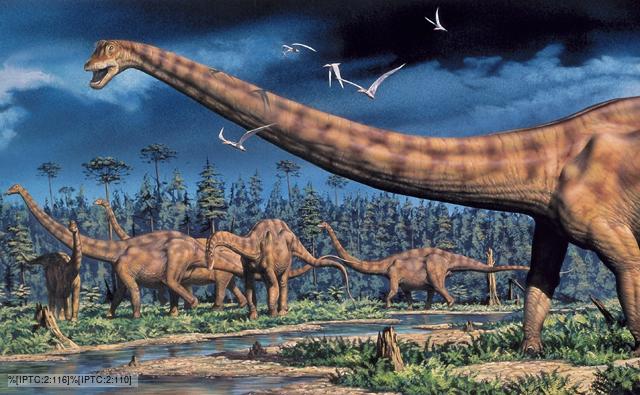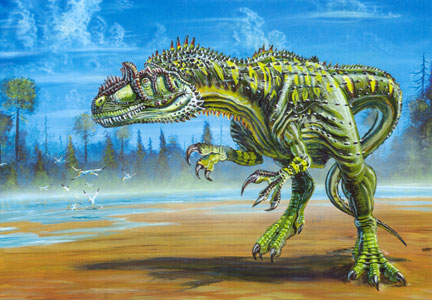
(doesn't he look dapper ladies?)
Gideon Algernon Mantell is perhaps best remembered for discovering Iguandon, one of the first dinosaurs to be described. This week, we will look closer at this South Saxon surgeon. Most of the information is derived from the book Dinosaur Doctor: The life and work of Gideon Mantell (Critchley, 2010).
Gideon was born on 3rd February 1790 in the town of Lewes, East Sussex. His father, Thomas, was a shoemaker and his mother was Sarah Austen. He was the fifth child of nine, his older siblings being: Sarah (who died in infancy), Thomas, Samuel and Mary, and his younger siblings: Algernon, Joshua, Jemima and Kezia.
Gideon had an interest in geology at a young age and spent many days of his youth collecting fossils from the nearby hills. Unfortunately, due to bizarre religious rules, Mantell, being a Methodist, was not allowed to study at any of the local grammar schools, because they were only for Anglican pupils. As a result, he was sent to a dame school (a school run by women designed to teach the absolute basics) and later was accepted into John Button's Academy for Boys where he was taught arithmetic and geography and some over subjects like rhetoric that we don't have anymore. After this, he was sent to Westbury, Wiltshire, to continue his studies with his uncle George (this is likely to be because Button was becoming a bit of a radical and started saying things like "Down with the Monarchy!!!!!" which probably didn't go down too well with the Royalist supporters in Lewes).
When he came back from Lewes two years later, he became an apprentice to a local surgeon, James Moore. Dr. Moore was also a keen naturalist and taught Gideon everything he knew about anatomy - both of humans and animals. Sadly, while he was an apprentice, his father, Thomas, died on 11 July 1807. But, you know what they say, always look on the bright side of life, and in this case, Thomas left Gideon enough money in his will so he could go to London and receive a Diploma from the Royal College of Surgeons.
When he again returned to Lewes he entered into a partnership with his former mentor Dr. Moore. They were both kept incredibly busy by the many epidemics of typhoid, cholera, smallpox and other fun epidemics that were ravaging the countryside at the time. He was able to make quite a tidy sum, £750 a year. Whilst he had very little free time, he did continue his fossil collecting and in 1813 he established a correspondence with the English naturalist James Sowerby. He sent Sowerby many of his specimens which Sowerby then described and published. In recognition of Mantell's help, Sowerby even named an ammonite after him: Ammonites mantelli (now called Mantelliceras mantelli).
In 1811, fellow amateur fossil collector Mary Anning discovered the fossil of a large crocodile (later identified as an ichthyosaur). The buzz surrounding this event prompted Gideon to become more interested in fossils and it gradually started to overtake his doctor duties (much to the chagrin of his patients I'd imagine).
On 4 May 1816, Gideon married 20-year-old Mary Ann Woodhouse. Since you needed to be 21 to marry, they needed her mother's permission and to obtain a special licence. Which they got.
By 1819, Gideon was collecting fossils from a quarry at Whitemans Green near Cuckfield, West Sussex. In 1820, he found some very large bones, even bigger than the ones found by Buckland (I wonder if he put them on his wall and called them his Mantell-piece, ahahahahahahahaha...ha...no?...*clears throat* Moving on). Then, two years later, his wife, Mary, found some big teeth that could not be identified. He initially sent the teeth to the French anatomist Georges Cuvier who identified them as rhinoceros teeth (according to another geologist Charles Lyell, Cuvier told him that he made the initial identification after he had come home from a late party and when he had woken up in the morning he changed his mind and thought they were something different but didn't resend a message back to England. Considering he said this years later, it's likely he was just protecting his own ego - who wants to admit they're wrong?).
Mantell next sent the teeth to Buckland who said they were fish teeth (how the jiminny he came to that conclusion is beyond me) but Mantell was eventually able to convince the scientific community he was right about it being something new. The question now was what was it going to be called. Mantell had previously noted its similarity with iguanas and in a letter to his friend William Conybeare, he intended to name it Iguanasaurus. Conybeare, however, didn't think that was a good name because it doesn't really indicate that it is different from the iguana, and suggested the names Iguanoides and Iguanodon instead. Mantell agreed and, in 1825, described the specimens as Iguanodon (and just like Buckland, he didn't give it a species name. That was added later in 1829 by Friedrich Holl: anglicus).
In 1833, Mantell moved to Brighton but unfortunately, his best days were behind him. His medical practice went downhill as he spent so much of his money on his collection and even transformed his house into a museum open to the public (for free). This left him in a dire financial position. In 1838, as a last act of desperation, he sold his entire collection to the British Museum (now the Natural History Museum, where they still reside) for £4,000 (after his original price of £5,000 was rejected).
He then moved to Clapham Common, London where he continued to be a doctor, except this time with no fossil collection to distract him. Sadly, things went from bad to worse for Gideon. His wife, Mary left him in 1839. Later that year, his son, Walter, moved to New Zealand. And in 1840, his beloved daughter Hannah died aged 18. Feel sorry for him? It's about to get even worse. In 1841, Gideon was involved in a carriage accident. Somehow, he fell out of his seat, got caught in the reins of the horse and was dragged along the ground . He suffered a severe spinal injury which left him bent and in constant pain. Despite this, he continued to publish papers on prehistoric reptiles. In 1844 he moved to Pimlico, London and in the following year became addicted to opium, having used it as a painkiller for his back. This proved to be his ultimate downfall as on 10 November 1852 he took an overdose of opium, passed out and sadly died. Even to the end, he was loyal to science, as in his will, he requested that his spine be removed and studied to improve future pathology. This was indeed done and for a long time belonged to his arch-rival Richard Owen (who wrote a very mean obituary accusing Mantell of lacking any scientific knowledge and merely publishing what his friends had told him in conversation and personal letters) who kept it at the headquarters of the Royal College of Surgeons where it remained until 1969 when it was destroyed to make space.
And so ended the life of Gideon Algernon Mantell. At the time of his death, 3 of his 4 children survived him: Ellen, Walter and Reginald. But his legacy lives on with many organisms that he named including:
Iguandon, Mantell, 1825 (an Ornithopod dinosaur)
Hylaeosaurus armatus, Mantell, 1833 (an armoured dinosaur)
Regnosaurus northamptoni, Mantell, 1848 (a Stegosaur, originally identified as a giant lizard)
Pelorosaurus conybearei, Mantell, 1850, genus only (a Sauropod dinosaur that Mantell originally wanted to name Colossosaurus until he realised that that name means statue lizard in Greek, so he named it Pelorosaurus, the monster lizard instead)
"Pelorosaurus" becklessi, Mantell, 1852 (another Sauropod although a different type to the original species of Pelorosaurus so really needs a new name)
Telerpeton elginense, Mantell, 1852 (an amphibian that is now synonymised with Lepterpeton lacertinum)
And there are a number of organisms named after Mantell including:
Mantelliceras, Hyatt, 1903 (an ammonite)
Mantelliceras mantelli, Sowerby, 1814 (an ammonite)
Mantellisaurus, Paul, 2007 (an iguanodont dinosaur)
Gideonmantellia, Ruiz-Omenaca, Canudo, Cuenca-Bescos, Cruzado-Caballero, Gasca and Moreno-Azanza, 2012 (an Ornithopod dinosaur)
The next biography will be about the guy who coined the word dinosaur: Richard Owen. But next week, we'll take a look at a frequently asked question, especially from children: Which was the biggest dinosaur?
The next biography will be about the guy who coined the word dinosaur: Richard Owen. But next week, we'll take a look at a frequently asked question, especially from children: Which was the biggest dinosaur?
References:
Critchley, E. (2010) Dinosaur Doctor: The life and work of Gideon Mantell, Chalford: Amberley





 In this picture of an animal cell, the nucleus is the big blue sphere. This is where the DNA is kept in Eukaryotes (animals, plants, fungi and some other funky things like algae and amoebae).
In this picture of an animal cell, the nucleus is the big blue sphere. This is where the DNA is kept in Eukaryotes (animals, plants, fungi and some other funky things like algae and amoebae).